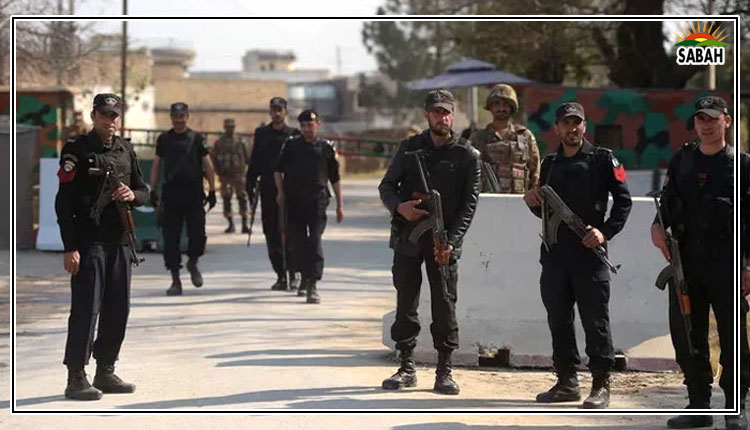Terror tide…Kashmala Ismail
In recent years, the Islamic State Khorasan Province (ISKP) has increasingly become a problem in Khyber Pakhtunkhwa (KP), and the number of targeted attacks on law-enforcement agencies (LEAs) and civilians has reached an all-time high.
Peshawar and Bajaur districts have been worst hit by the rise of terrorism, witnessing a surge in targeted attacks on LEAs and civilians associated with it.
The ISKP has intentionally expanded its attacks in KP since 2014. According to the district-wise breakdown of attacks carried out by the entity, Peshawar is a prime target with 115 attacks recorded during the last 10 years followed by Bajaur which witnessed 24 terrorism cases. These statistics suggest that 2022 witnessed the most heightened violence as the terrorist group unleashed 49 attacks across different parts of the province.
There is a multi-dimensional pattern to the ISKPs operations: terrorism, terror financing through crimes like extortion or ransom demands often imposed upon business owners within their domain, and target killings among other various tactics including money laundering schemes employed by them.
The shift from holding territories in rural areas into full-fledged urban warfare has posed a series of threats making it difficult for security agencies to preempt attacks. Moreover, the strategy has become more sophisticated as evidenced by deliberate killings followed by massive suicide bombings such as the July 30 Bajaur blast where 58 civilians lost their lives while over 100 were injured.
The statistical data of terrorism of the ISKP features a severe human cost of terrorism in KP resulting in fatalities. Since 2014, 122 attacks have occurred, resulting in 204 fatalities. A total of 36 police officers were martyred during these attacks and 168 civilians lost their lives. These numbers show that the ISKPs violence is random and necessitates immediate counter-terrorism approaches.
Although 188 cases of terrorism have been filed against the ISKP by the CTD in KP since 2014, analysis of its efforts indicates a bag of mixed outcomes. Non-judicial counterterrorism measures (NJCTMS) such as police encounters and target killings have led to the neutralization of 62 terrorists such that they could not pose a danger to society, but their continued efficiency remains debatable specified by increasing levels of the threat posed by ISKP activities over time.
Conversely, judicial counterterrorism measures (JCTMS) provide a more enduring answer but are dealing with difficulties. Only 22 out of 153 terrorism cases resulted in convictions between 2017 and 2023, marking a dismal conviction rate of 14.3 per cent. Several reasons account for this, which include insufficient evidence, inadequate investigations, and the complex nature of prosecuting terrorism cases.
For effective resistance to the ISKP, the CTD should focus on JCTMs and confront any obstacles that may hinder their execution. Establishing a national consensus on the judicial approach to combat terrorism is crucial. This consensus will help channel funds for improving investigation quality and collecting evidence which can result in more convictions. Therefore, it is imperative for policymakers, law-enforcement agencies, and networks to cooperate in carrying out these systems and guaranteeing a more secure future for all.
Optimizing the speed of investigation and effectiveness requires investment in tools and technology for data analysis. Enhanced data analysis capabilities can provide valuable insights into the ISKPs operation, so that any action may be taken to stop them even before they occur. Additionally, intelligence collection is improved when law-enforcement agencies work hand in hand with community stakeholders who live within those areas where these attacks are likely to happen.
Data shows that the ISKP is a well-organized structure since it operates under an emir with a supportive shura council. It can increase its capacity to carry out attacks by employing leaders who have served with the Taliban previously and have experience in various regions. Recruitment strategies exploiting divisions among jihadist groups and providing cash incentives have increased the ranks of the ISKP, making it a strong opponent.
The groups tactics signal a deliberate attempt to destabilize the area and erode trust and security agencies through such means as targeted killings or suicide bombings. Recently, the ISKP has started to refrain from claiming responsibility for attacks publicly this was evident in Bajaur which indicates that they are more concerned with avoiding retaliation while maintaining their operational secrecy.
There is an ongoing need for comprehensive responses coordinated with all the parties concerned against acts and threats by the ISKP in KP. While NJCTMs help with immediate relief by neutralizing active terrorists, JCTMs provide a long-term solution by dealing with the root causes of terrorism through the legal system. To enhance the conviction rate in terrorism cases, there is a need for improved methods of investigation, allocation of more resources, and inter-agency coordination among others.
The CTD, backed by consensus at a national level and engagement of the community, should use different approaches to fight against terrorism. These include better data analysis through technology, intelligence gathering, enhancement, and promoting societys resistance to radicalization.
Only through strategic and sustained efforts can KP hope to bring about lasting peace and security in the area and reduce the threat of the ISKP. If all divisions of government and society can support it, a national strategy will be more effective in the long run.
Courtesy The News












